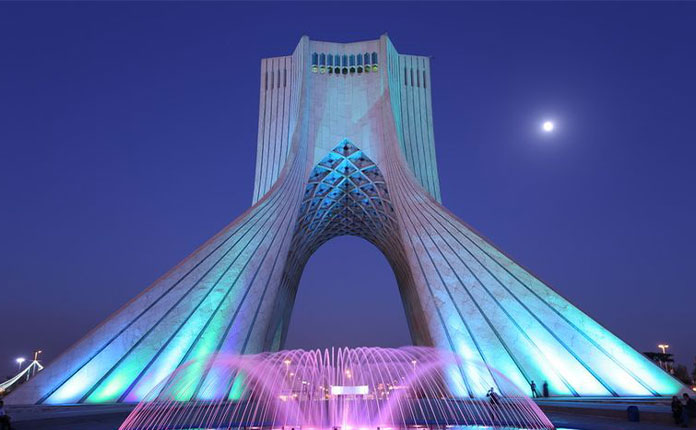Azadi Square has held significance throughout its history, whether known as Shahyad—a tribute to the kingdom’s splendid celebrations—or after its renaming to Azadi Square. It stands as a crucial national symbol and historical emblem of the capital, where each day brings a unique essence. Tehran, the capital of Iran, cherishes this tower and square not just for their architecture and beauty but also for their name.
In this post from OverIran tourism magazine, we aim to acquaint you with this cherished and pivotal tower.
How the Azadi Tower Represents Iran’s Past and Future

Azadi Square owes much of its renown to the towering structure at its center. Constructed in 1349 AH by the order of Mohammad Reza Pahlavi, this tower, despite the passage of several decades, remains not only the symbol of Tehran but also, one might argue, the symbol of Iran worldwide.
The unique design of Azadi Tower, originally named “Shahyad Tower,” was crafted by “Hossein Amanat,” with Mohammad Pourfathi entrusted with its execution and construction. The purpose behind erecting the azadi tower (Freedom Tower) was to commemorate the 2500-year celebrations of the Iranian Empire, leaving us with an architectural masterpiece despite its shortcomings.
Truthfully, Azadi Square holds more significance for Iranians than merely being a picturesque spot for photos or a place to stroll. It’s accurate to state that Azadi Square stands as Tehran’s most significant historical witness, bearing witness to the commencement and conclusion of countless events.
Azadi Square, post-revolution

Following the revolution, Azadi (freedom) Square emerged as a pivotal gathering spot for societal events, from the welcoming ceremony of Imam Khomeini upon his return from Paris to various significant political and social assemblies. A remarkable event in the post-revolutionary era was the annual tradition of dropping a ball during the New Year celebration near the azadi Tower. During Nowruz 1400, this incident resulted in visible cracks on the tower, for which no institution or organization has claimed responsibility to date.
The construction of a passenger terminal at the periphery of Azadi Square has elevated its status to one of the busiest squares in Tehran. However, the consistent issue frequently raised concerning Azadi Square and its iconic tower pertains to the neglect and insufficient maintenance of this site in the post-revolution era.
Architectural Features of Azadi tower

Azadi Tower, situated precisely in the center of Azadi Square, boasts a distinctive and captivating architecture, with its most conspicuous feature being the tower’s “stature.” At first glance, it may appear somewhat modest, and on further inspection, one might even think it seems as though it could have been taller!
Frankly, that perspective isn’t entirely unfounded, considering the Azadi Tower’s height of 45 meters still appears somewhat longing for a bit more elevation. Nonetheless, we must place our trust in the architect and designer, allowing for the possibility that this was their intentional concept.
The rationale behind capping the tower at 45 meters links to its proximity to Mehrabad Airport, effectively limiting Hossein Amanat’s design options. Despite this constraint, Amanat dedicated considerable efforts to offset this limitation by manipulating the slope of the land in various sections and adjusting the tower’s width and length.
What’s happening within the Azadi Tower?
Following the observation of the tower’s exterior architecture, let’s delve into its interior. Azadi Tower is equipped with two staircases and two elevators that grant access to its four internal floors. There are a total of 286 steps, which might leave you debating whether to take the stairs or hope the elevators are functioning—or perhaps, even count the steps!
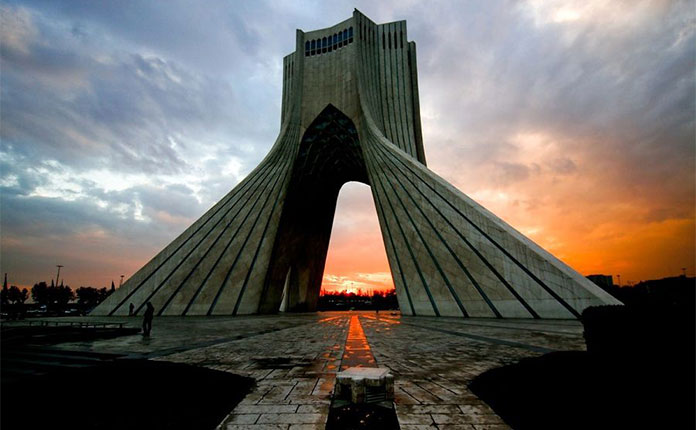
The architectural style of Azadi Square, particularly the former Shahyad Tower, bears influences from various historical periods. The tower’s foundations draw inspiration from the Achaemenid era, while the central arch reflects the likeness of the Kasra arch from the Sassanid period. In other sections, elements of Islamic period architecture are evident, affirming the holistic design integration of Azadi Tower.
Various Areas of Azadi Square
Contrary to the common perception of Azadi Square, its scope extends beyond the tower and its immediate surroundings. Admittedly, as a resident of Tehran, I wasn’t particularly acquainted with the tower’s interior until my visit to witness a theater performance, where I was astounded by the bustling world concealed within the heart of Azadi Square. In this segment, I’ll delve deeper into this intriguing “world inside the tower”:
Azadi Square as a gateway
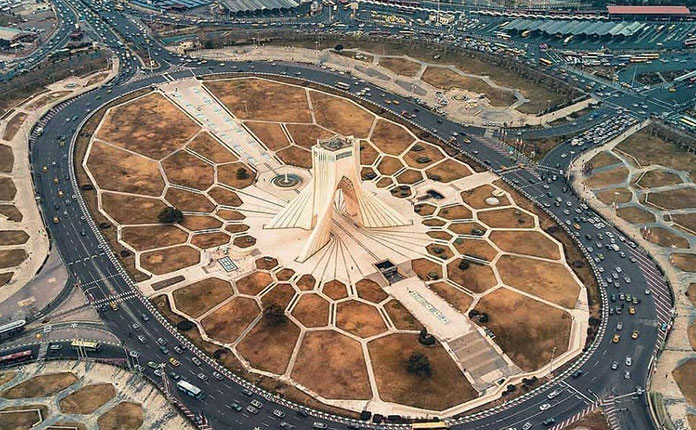
Azadi Square serves as a gateway to various areas of Tehran from four directions. Heading north directs you to Mohammad Ali Jinnah Highway, while the southern route leads to Ayatollah Saeedi Highway. To the east lies Azadi Street, and toward the west is Lashkari Highway. Among the numerous roads and streets, Azadi Tower stands out as a significant and heavily frequented entrance to Tehran, witnessing the daily influx of travelers.
Hidden Attractions in the Basement of the Square
Let’s delve into the world concealed within the tower, which houses various sections and attractions:
Cinema Hall
The movie theater within Azadi Square is a small venue accommodating 51 seats. Established in 2008, it primarily serves for private screenings and the review of artistic works.
Hall of Mirrors

Comprising 12 sections adorned with mirrored surfaces, the Hall of Mirrors enhances visibility for displayed artworks. Symbolic images in this section encompass topics such as oil, environment, wildlife, urban development, and sports.
Bostan Gallery
This spacious hall, adorned with a serene and bright ambiance, provides an ideal setting for art workshops and visual art exhibitions.
Ceremonial Hall
Among the pleasant structures in Azadi Square, the Ceremonial Hall caters to hosting press conferences and cultural events, fulfilling this specific need within the tower.
Hall of Iranology
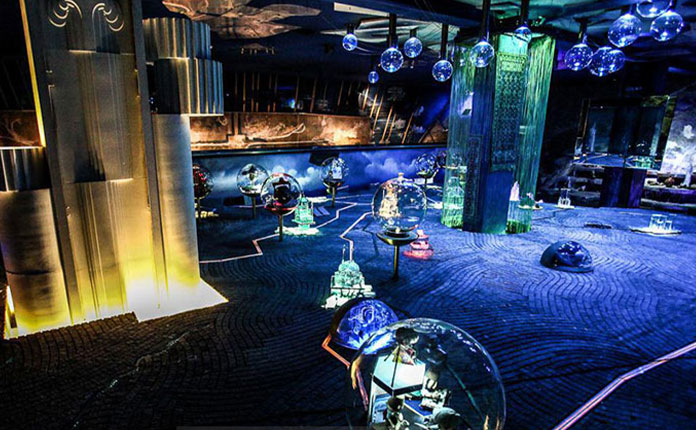
Intended to offer insight into Iran, the Hall of Iranian Studies presents a primitive model showcasing symbols and equipment narrating Iran’s history. Situated within the heart of Azadi Tower, known as the symbol of Iran, this hall surpasses mere replication, sparking curiosity in every viewer.
Old Hall
Functioning as a museum, the Old Hall exhibits artifacts from the Sassanid, Achaemenid, Parthian, and select Islamic periods within 25 glass showcases. Notably, the Qajar-era women’s jewelry, previously housed in the Saadabad Palace Museum, is now on display here, directly beneath the azadi Tower.
Technology Corridor
Previously more captivating, the Technology Corridor of Azadi Square once intrigued visitors with diverse technological displays, including a humanoid robot playing the piano, capturing attention in an era less saturated with technology advancements.
Library
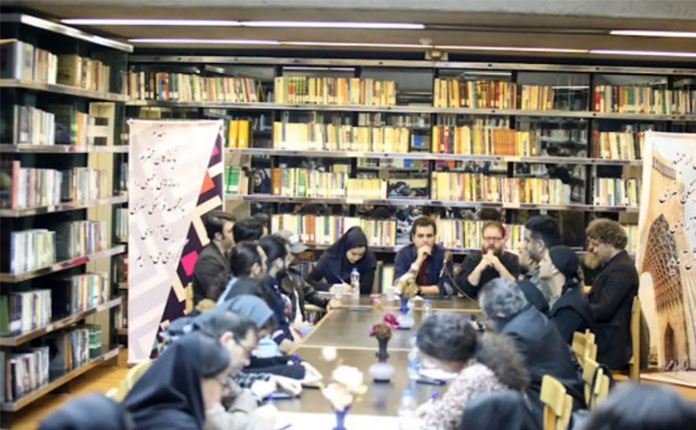
Although not deemed a reference center, the Azadi Square Library houses 11,000 books, including 2,000 valuable sources covering history, architecture, linguistics, and literature, often utilized for reference.
Passage of the Ancestors
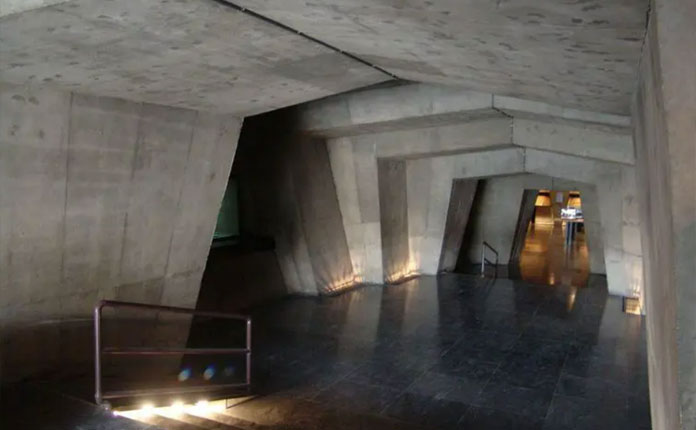
Distinct lighting characterizes this section of the hallway, adorned with glass showcases presenting historical artifacts predating the era of Christ, offering a captivating glimpse into ancient history.
The First Floor of Azadi tower

As mentioned earlier, the former Shahyad Tower within Azadi Square comprises four floors, each serving distinct purposes. So, what can we find on the first floor of Azadi Square? All the areas previously described are situated in the basement of Azadi Square. This level constitutes the primary area of Azadi Tower, where significant programs and events are conducted.
The Second Floor of Azadi Tower
The second floor holds no specific features and primarily serves as a space for elevator access. When observing the arch of Azadi Tower from the exterior (approximately 23 meters above the ground), one is actually looking at the second floor of Azadi Square.
The Third Floor of Azadi Tower

For a deeper exploration of Azadi Tower’s architecture rather than the galleries and halls of Azadi Square, visit the third floor. Positioned approximately 33 meters above the ground, this level features a concrete dome that captures attention when one gazes upward. A sun-shaped roof radiates a beautiful glow through the center. If acquainted with architectural principles, the striking blend of modern and traditional architecture here can be appreciated.
The Top Floor of Azadi Tower
The highest floor of Azadi Square holds a special place in my heart within the azadi Tower. Despite its moderate height, gazing at the capital’s north, south, east, and west through its honeycomb windows creates a brief detachment from the bustling street life below. It’s an experience that’s sure to provide a pleasant moment of respite from the daily hustle and bustle.
If you like to see the city from a height, you might want to get to know Milad Tower that is the tallest tower in Iran.
Azadi Square: Symbolizing Tehran and Freedom-Loving Iran
Going to Azadi Tower is one of the best things to do in Tehran. The unique architecture, intriguing history, captivating interiors, and other distinctive features of Azadi Square all contribute to its iconic status. It’s safe to say that collectively, these elements have turned Azadi Square into a comprehensive political symbol—a square adorned with a tower standing tall, yet marked with cracks, mirroring the resilience of the Iranian people above all else. Ensure to include a visit to this tower during your trip to the capital of Iran.
